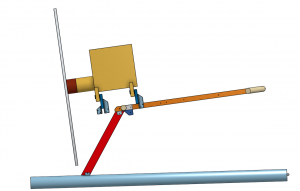Here are the 3 propellers we are considering:
1. Warp Drive 68 inchPropeller, 3 Blade 68-Right turning, CF/Nickel LE/Taper Tips/HPL-R Hub/912-914 Pattern
2. DUC 3-Blade Hydro Inconel Flash-2 Propeller, LH, Pusher, 67 inch or 1700mm Diameter
3. Luga R83-HP 67 inch prop high horsepower prop (not shown on their website, appropriate for 117HP engines)
Anecdotally it seems that most Searey’s are using the “Warp Drive 68” propeller (List price $1225):
https://store.searey.com/produ
https://store.searey.com/produ
Duc makes a 67 inch pusher prop designed for Seaplanes. It costs more ($2000+) but has good anecdotal reviews.
http://www.aircraftspruce.com/catalog/appages/ducflash-2prop.php?clickkey=4848017
Aeromomentum is a dealer for Luga props. http://www.lugaprop.kiev.ua/catalog_en.html
Luga props have been used on Aventura planes and on airboats where they have proven to be durable in handling the occasional beer can thru the prop. They are made in the Ukraine. They usually cost $1070 for a three-blade prop and ground-adjustable hub, which may be upgradable down the road to an inflight-adjustable hub. The most appropriate prop is the R83-HP which is a high performance version of the R83 and is appropriate for 117HP engines.
Seareys generally tend to be tail-heavy and a shorter prop would allow the engine to be mounted slightly further forward with the maximum-recommended 4″ prop spacer without pylon interference issues. Longer props tend to be more efficient and quieter, but that’s only if they don’t collide with the back of the pylon.
Clearance is also an issue for the prop. The Duc prop can flex about 4 inches, some other props flex 6 to 8 inches.
On the Searey you want to make sure that the prop doesn’t hit the rear pylon or the turtledeck/boom tube.
This affects the engine mounting position and if you use a spacer to extend the prop backwards. The spacer can be up to 4 inches.
Some people choose to tilt the engine so that the prop has a different thrustline. That can provide more clearance also but
will affect the takeoff and flight characteristics. We have been advised that the more near the thrust line is to the CG and center of drag the better for pitch change. Since the CG is well in front of the prop, tilting the engine up in the back (and down in the front if possible) helps get the thrust line more near to the CG.


